Darapsa myron, the Virginia Creeper Sphinx, Hog Sphinx
Darapsa myron
dagh-RAP-suhMMY-ron
(Cramer, 1779) Sphinx
The Virginia Creeper Sphinx/Hog Sphinx/Grapevine Sphinx
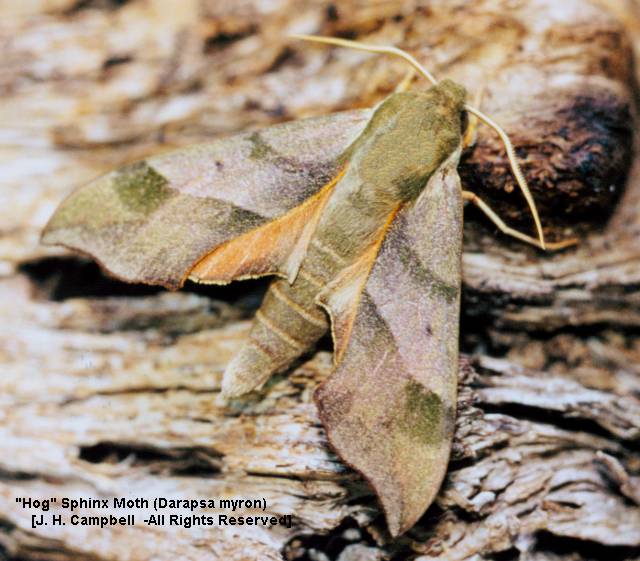
Darapsa myron courtesy of John H. Campbell.
This site has been created by
Bill Oehlke at oehlkew@islandtelecom.com
Comments, suggestions and/or additional information are welcomed by Bill.
TAXONOMY:
Family: Sphingidae, Latreille, 1802
Subfamily: Macroglossinae, Harris, 1839
Tribe: Macroglossini, Harris, 1839
Genus: Darapsa Walker, 1856
Species: myron (Cramer, 1780)........
|
MIDI MUSIC
......It's a Wonderful World......
copyright C. Odenkirk
ON.OFF
<bgsound src="world.mid" LOOP=FOREVER>
|
DISTRIBUTION:Darapsa myron, the Virginia Creeper Sphinx, Grapevine Sphinx, or Hog Sphinx,
wing span: 1 3/4 - 2 9/16 inches (4.5 - 6.5 cm), is found in Maine south to south Florida;
west to North Dakota, Nebraska, New Mexico, and Texas. It also flies in Mexico.
Subspecies Darapsa myron mexicana flies in Mexico, and is possibly occasionally taken in Louisiana (VAB) and Florida (GR/YA).
Subspecies mexicana seems to be lightly maculated, and the forewing is light bownish-orange, as opposed to having the greenish tint more characteristic
of nominate myron.
However, there is a pale, brownish form of nominate myron found in southern Florida.
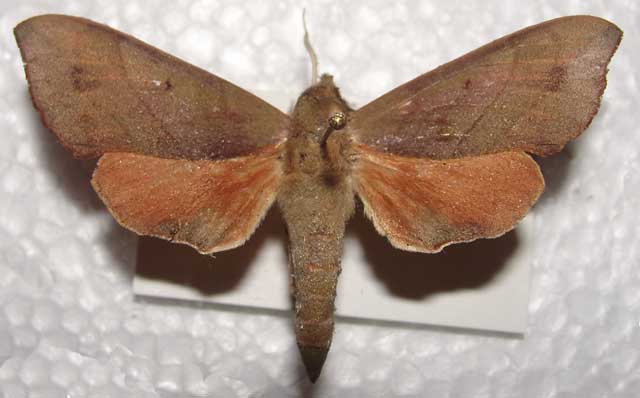
Darapsa myron, Wauchula, Hardee County, Florida,
early June, 2012, courtesy of Greg Roehm, tentative id by Bill Oehlke.
I believe that the specimen from Wauchula, Florida, is either subspecies Darapsa myron mexicana or a very lightly maculated (possibly faded)
nominate myron. Vernon A. Brou has confirmed that the Wauchula, Florida, specimen is nominate myron.
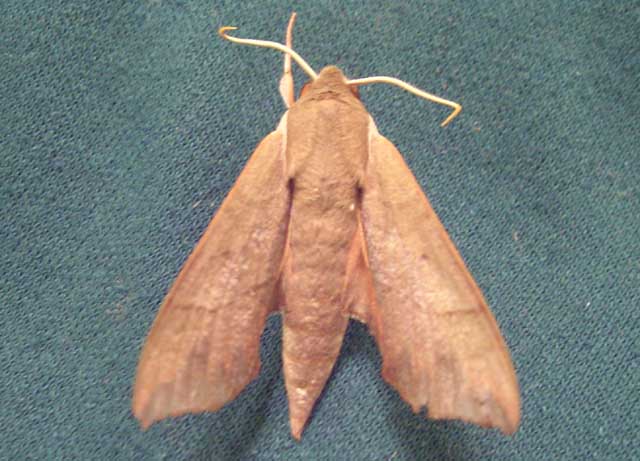
Darapsa myron pale form, Hillsborough River State Park in Tampa,
Florida,
April 29, 2006,
courtesy of Yolanda Acevedo.
Yolanda writes, "I collected this specimen at Hillsborough River
State Park in Tampa, FL on April 29, 2006. I'm afraid camping tents
don't make a good home for them in the Florida heat. This one was
overcome by heat (or maybe one of our Pathfinders?) It measures
1 1/4 inches long (3.2 cm). The bottom wings have a pinkish tint to
them."Jean Haxaire indicates the moth from Tampa, Florida,
is a pale from of myron rather than subspecies D. m. mexicana.
Shortly after I posted the brown Darapsa myron image above from, Greg Roehm, Vernon Brou advised me that the moth is a nominate
Darapsa myron myron brown form, and not subspecies Darapsa myron mexicana. James A. Tuttle also indicates there is the brown form of nominate myron,
seen in many of the southern counties in Florida. It must be fairly common in Hardee County, Florida as Greg Roehm also sends this image of three specimens he
captured on June 7, 2011.
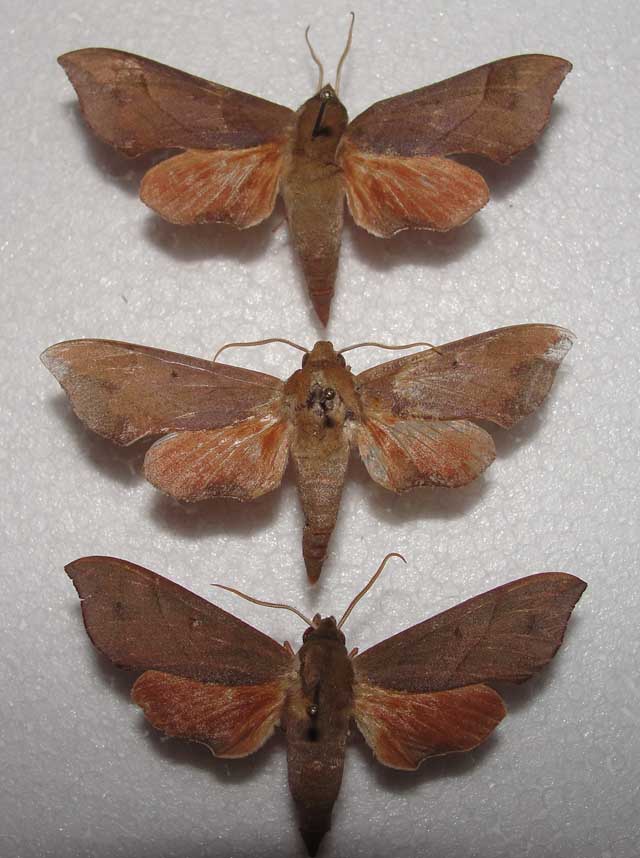
Darapsa myron myron trio, Wachula, Hardee County, Florida,
June 7, 2011, courtesy of Greg Roehm.
Visit Darpsa myron gas station, Lee County, Iowa, June 9, 2013, Thomas Jantscher.
Visit Darapsa myron Eddie Jones Park, Caddo Parish, Louisiana, May 17, 2013, courtesy of Jeff Trahan
Visit Darapsa myron Londonderry, Rockingham County, New Hampshire, July 16, 2008, courtesy of Deb Lievens.
Visit Darapsa myron, Onalaska, La Crosse County, Wisconsin, July 3, 2008, courtesy of Dan Jackson.
Visit Darapsa myron, Annapolis, Anne Arundel County, Maryland, July 20, 2010, courtesy of Saundra Byrd.
Visit Darapsa myron
June 14, 21, 2008, Athol, Worcester County, Massachusetts, courtesy of Dave Small.
Visit Darapsa myron
June 14, 2009, Athol, Worcester County, Massachusetts, courtesy of Betsy Higgins.
Visit Darapsa myron, Ozaukee County, Wisconsin, June 29, 2011, July 26, 2008, courtesy of
Kate Redmond
Visit Darapsa myron, grey-brown form and orangey-brown form, Long Key Nature Center, Broward County, Florida, February; September;
Kelli Whitney.
The forewing upperside is dark brown to pale yellowish gray, with an olive tint. This species
was quite common in rural New Jersey where the forewing color contained more green than
described above, often more vibrant than in the John Campbell image.
On the costal margin there is a dark rectangular patch, although this may be reduced or absent.
The upperside of the hindwing is pale orange. Image courtesy of John Himmelman, Connecticut, July 12, 2003.
| 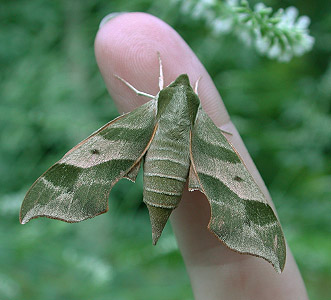 |
FLIGHT TIMES: Darapsa myron is
double-brooded through northern portions of its range, with moths on
the wing from March-September. In Florida and other southern states
there are multiple broods. The moth is found in woodlands and brushy
areas where larval hosts are found. Tim Dyson provides this ventral
side image from Peterborough, Ontario, June 13, 2005. | 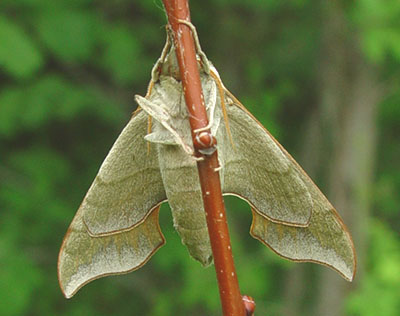 |
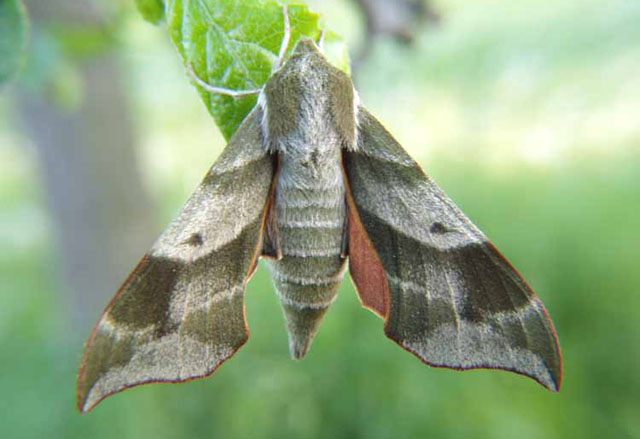
Darapsa myron courtesy of Hynek Habal
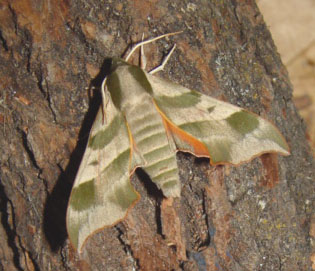 |
ECLOSION:Little is known about the eclosions of the earth pupators, but many believe
pupae wiggle toward the surface just prior to emergence.
SCENTING AND MATING:Darapsa myron females extend a scent gland from the posterior of the abdomen
to lure in the night flying males. Both sexes nectar at flowers.
Darapsa myron, Peterborough, Ontario, June 8-9, courtesy of Tim Dyson. |
Tim Dyson also sometimes checks a bait trail for Catocala moths. He uses fermenting fruit, sometimes mixed with some sugar and alcohol, inviting
underwing moths for a photo shoot. In early August of 2016, Tim sent a series of images of Darapsa myron visiting the sticky fruit and
imbibing the sweet juices.
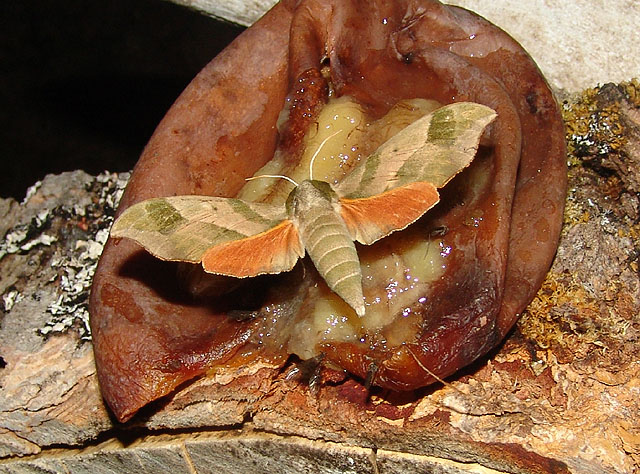
Darapsa myron at bait, Peterborough, Ontario,
July 31, 2016, courtesy of Tim Dyson.
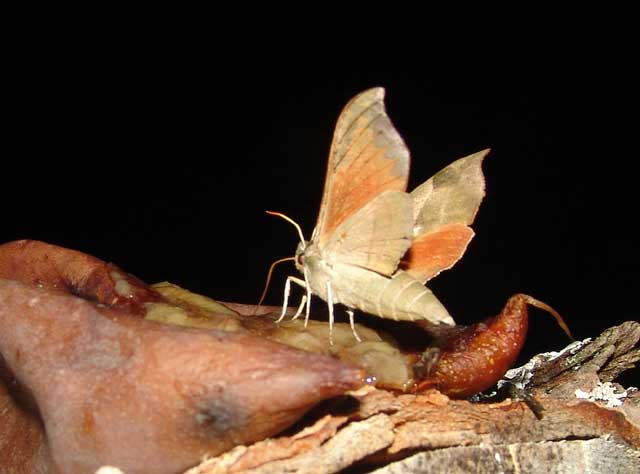
Darapsa myron at bait, Peterborough, Ontario,
July 31, 2016, courtesy of Tim Dyson.
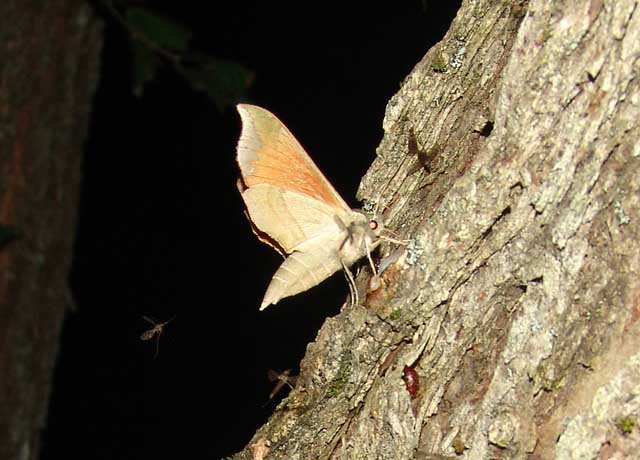
Darapsa myron at bait, Peterborough, Ontario,
July 31, 2016, courtesy of Tim Dyson.
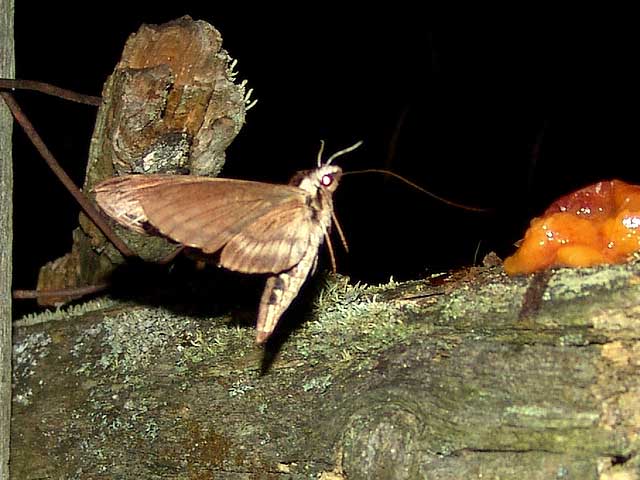
Sphinx kalmiae at bait, Peterborough, Ontario,
July 31, 2016, courtesy of Tim Dyson.
Tim also had a visit from Sphinx kalmiae, same date, same fruit stand!
EGGS, LARVAE, PUPAE:
Darapsa myron larvae feed on
Virginia creeper (Parthenocissus quinquefolia), Grape (Vitis),
Ampelopsis, and Viburnum.
Females lay translucent yellow-green eggs in twos or threes on the underside
of host leaves. Eggs hatch in five or six days, and the young caterpillars eat their eggshells.
The developing larvae usually become visible after three to four days.Images courtesy of Jacalyn Loyd Goetz. |
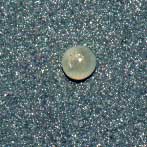 |
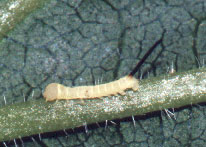 | 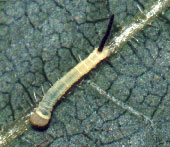 | Freshly emerged larvae have a yellowish cast with a disproportionately long
anal "horn".
As they partake of their first meal of foliage, it is interesting to watch the green food pass
through their long intestinal tracts.
|
Growth is rapid, and these fourth instar larvae have been feeding for only
two weeks.
When temperatures are warm, day and night, larvae can complete their growth within three weeks.
Fully-grown caterpillars descend foliage trunks or stems and spin a loose cocoons in fallen
leaves on the ground. | 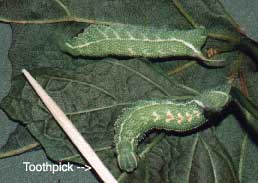 |
At pupation time, I pick up such Sphingidae larvae with my fingers and gently put them in a bucket, bottom-lined
with several layers of loose, dry paper towels. The larvae will crawl under the towelling and
pupate on the bottom of the bucket.
This method, a warm dark bucket lined with paper towelling, is
sufficient to induce pupation in most of the earth pupators. Pupae are wiggly and greatly resembe Darapsa pholus
pupae, being a mottled tan with dark brown between abdominal segments. | 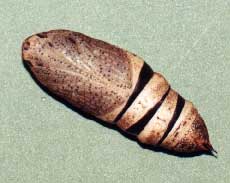 |
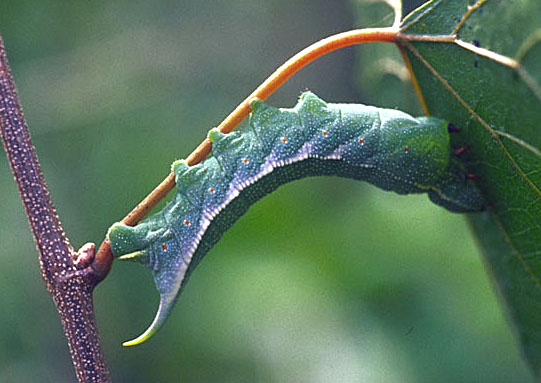
Darapsa myron larva
courtesy of Lance S. Risley, Coweeta Hydrologic Lab.
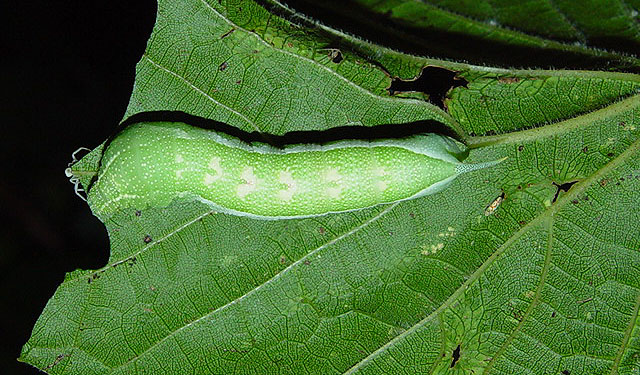
Darapsa myron feeding on grape, August 2, 2006, Peterborough,
courtesy of Tim Dyson.
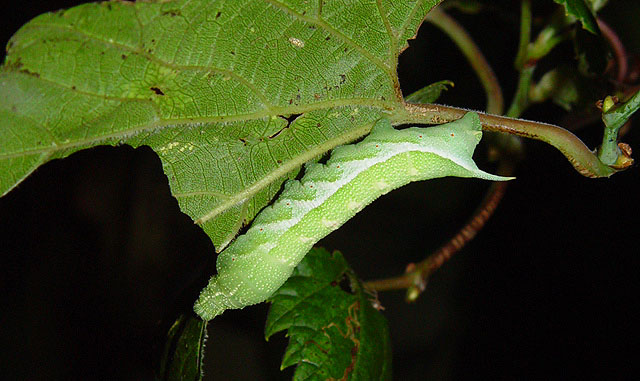
Darapsa myron feeding on grape, August 2, 2006, Peterborough,
courtesy of Tim Dyson.
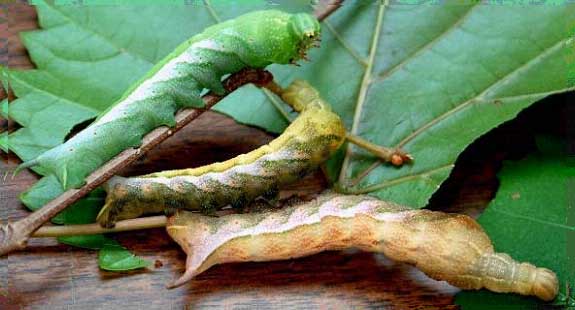
Darapsa myron, Louisiana, courtesy/copyright
Vernon Brou.
Visit Darapsa myron fifth instar brown form, Washington County, Ohio,
September 13, 2009, courtesy of Lori Hall.
Note continuous subdorsal-lateral line, separating myron from other Darapsa species.
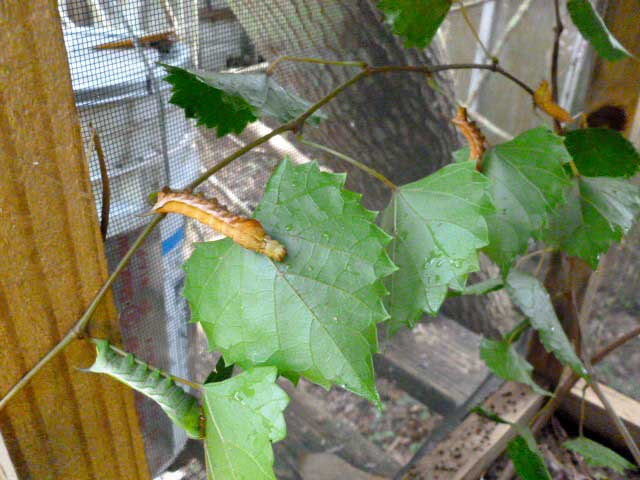
Darapsa myron late instars, Bon Secour, Baldwin County, Alabama,
September 2012, courtesy of Dirk Bayer.
Use your browser "Back" button to return to the previous page.
Goto Main Sphingidae Index
Goto Macroglossini Tribe
Goto Central American Indices
Goto Carribean Islands
Goto South American Indices
Goto U.S.A. tables
Enjoy some of nature's wonderments, giant silk moth cocoons.
These cocoons are for sale winter and fall. Beautiful Saturniidae moths will emerge the following spring and summer.
Read Actias luna rearing article. Additional online help available.
Use your browser "Back" button to return to the previous page.
This page is brought to you by
Bill Oehlke and the
WLSS. Pages are on space rented from Bizland. If you would like
to become a "Patron of the Sphingidae Site", contact Bill.
Please send sightings/images to Bill. I will do my best to respond to
requests for identification help.
 | 
Show appreciation for this site by clicking on flashing butterfly to the left.
The link will take you to a page with links to many insect sites. |























